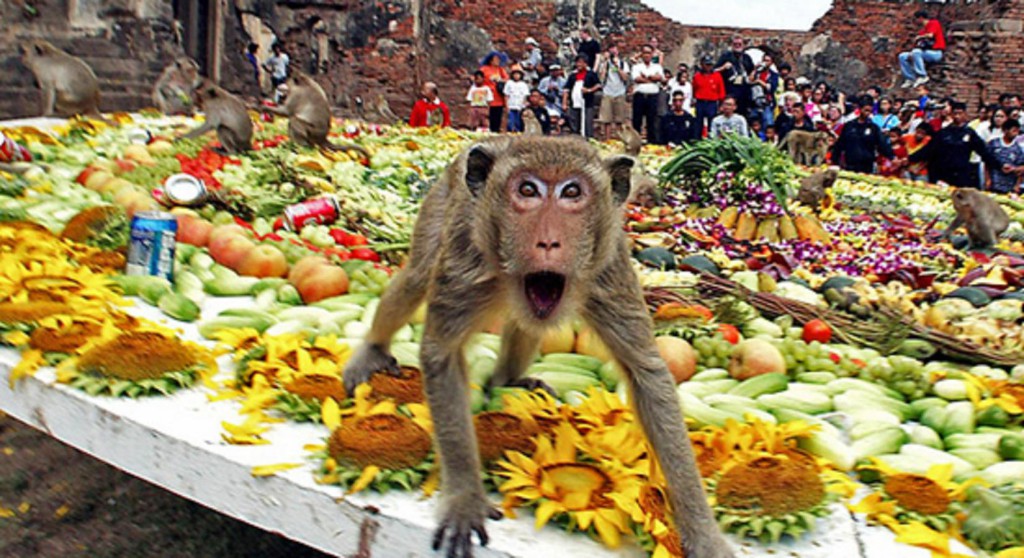 What are staring at?!
What are staring at?!
Dubbed “Monkey City,” the province of Lopburi (150km northeast of Bangkok) in Thailand is known for its population of long-tailed macaques that guard its ancient ruins and temples.
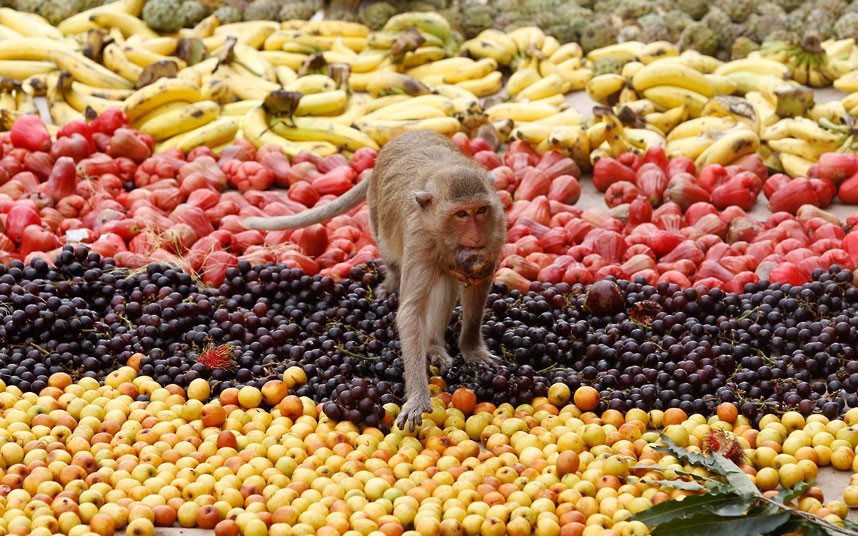
Like a boss...
The Thai version of the Ramayana legend claims that the ancient city of Lopburi was created with the help of his friend Hanuman the Monkey King. Many of Lopburi’s residents consider the macaques descendants of Hanuman, hence this monkey feast is held in their honour.
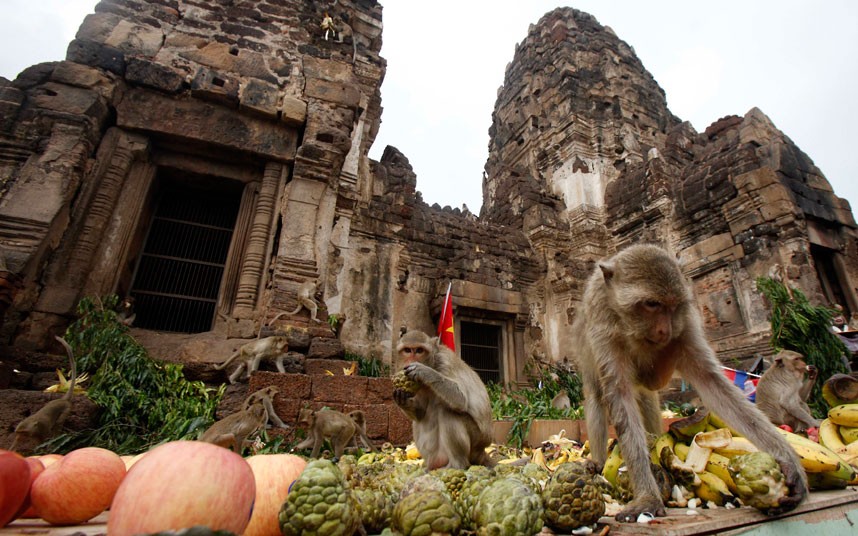
Prang Sam Yot Temple (now monkey territory)...
To give thanks to the monkeys, the city holds an annual “monkey buffet” feast every last week of November at an ancient Khmer temple, Prang Sam Yot, built in the 10th century by the Khmer dynasty with similar architecture as Cambodia’s Angkor Wat.
And what a feast it is.
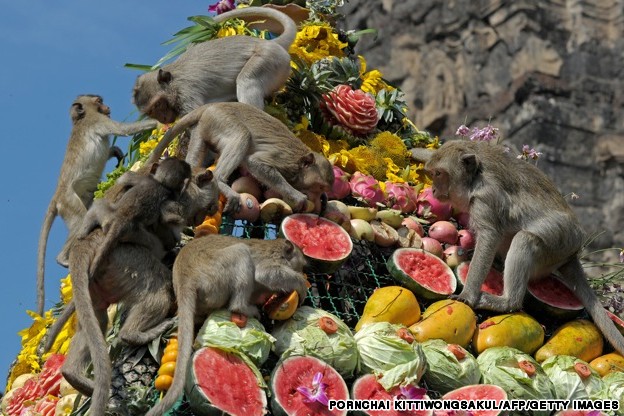
Too busy eating to bother stealing from tourists...
Buffet tables are laid out with with over 4,000 kilograms of food — peanuts, cabbage, watermelon, bananas, pumpkin, pineapple, boiled eggs, cucumbers, cakes, candies, and cans of soda and juice — all prepared for the monkeys. The fruits and vegetables are sometimes arranged in festive, colourful pyramids or simply laid out on mats by the temple, to the delight of the monkeys.
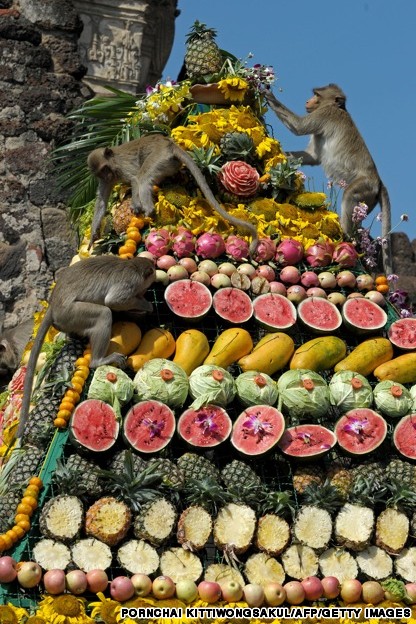
Buffet molesters...
The buffet sparks a feeding frenzy among the 3,000 macaques that live in the area, and the festivities have become a popular attraction for both local and foreign visitors.
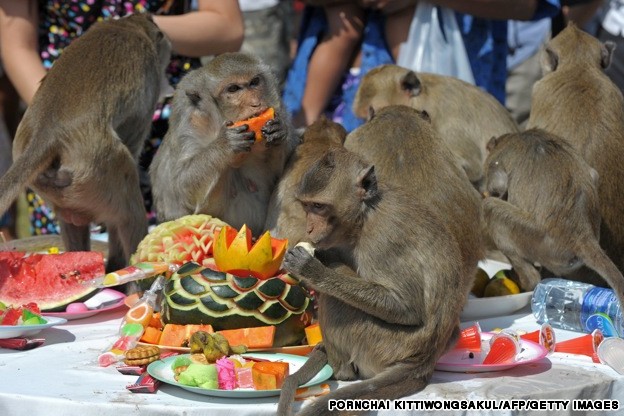
Most of them suffer from severe lack of table manners...
The monkey buffet festival also hosts performances and activities that celebrate all things monkey, such as music and dances with people dressed like monkeys in monkey costumes and monkey masks. Monkey sculptures also flourish around the area.
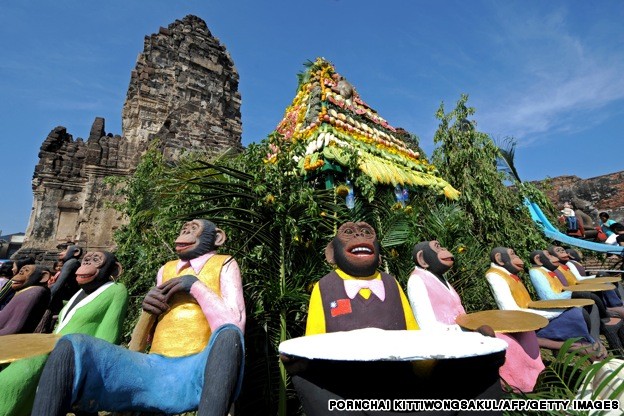
Monkey statues dressed in fancy suits offering drinks and sweets...
Lopburi’s monkey population survives in part due to Buddhist discouragement of killing animals.
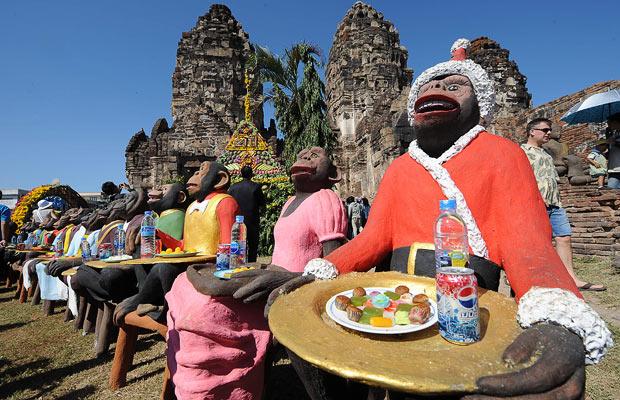
Lunch is served!
Because the monkeys that populate the town are used to human interaction, they have also been known to cheekily steal unwary tourists’ belongings or food. Officials remind visitors that the monkeys are wild animals and can get aggressive, and warn photographers against luring the monkeys with food.
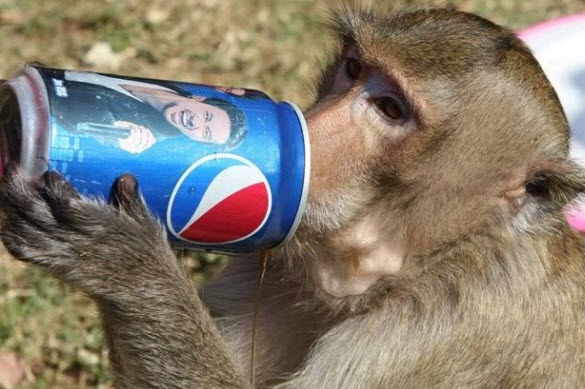
Living life to the Max...
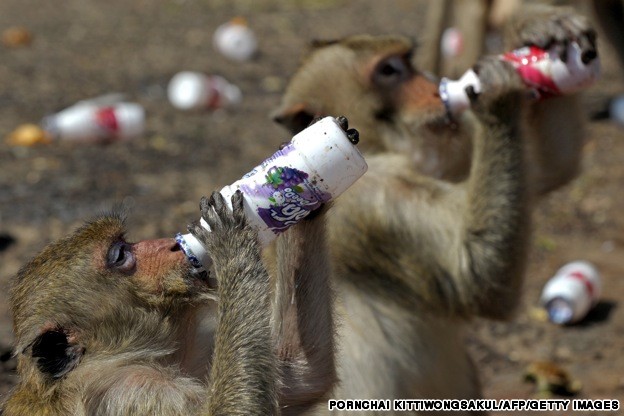
Milk for the young ones...
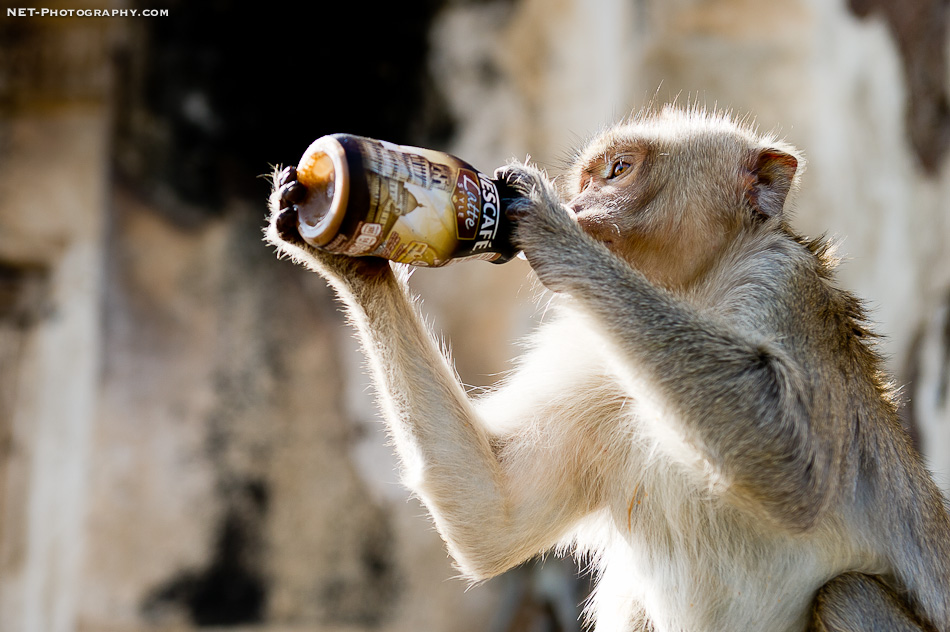
I need to stay awake to chow down more food...
Lopburi is a three-hour train ride from Bangkok via Ayutthaya. Entrance to the Prang Sam Yot temple is 30 Baht inclusive of sticks that will help ward off aggressively cheeky monkeys.
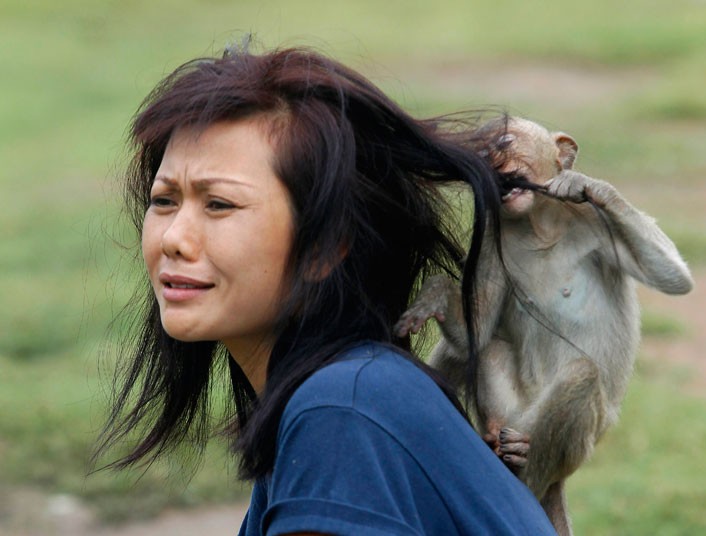
Business as usual (when the buffet is over)...
References:
http://edition.cnn.com/2013/11/25/travel/gallery/lopburi-monkey-buffet/index.html
http://festivalasia.net/festivals/Monkey-Buffet-Festival-2013.html
http://www.weather.com/travel/monkey-buffet-thailand-photos-20131105
http://travel.cnn.com/bangkok/visit/gallery-lopburis-annual-monkey-feast-sparks-feeding-frenzy-423899
http://www.telegraph.co.uk/travel/picturegalleries/9703067/The-annual-Monkey-Buffet-Festival-at-a-temple-in-Thailand.html?frame=2409767
http://www.telegraph.co.uk/earth/earthpicturegalleries/6691127/The-annual-Monkey-Buffet-Festival-at-Pra-Prang-Sam-Yot-temple-in-Lopburi-Province-Thailand.html?image=1
Hidden Penis Shrine in Bangkok
Every guidebook on Thailand or Bangkok features all the major sites to see in the city, Buddhist temples, floating markets and open-air restaurants, but hardly ever do you find information on the unique Penis Shrine.
Most Thais are devout Buddhists, yet a large proportion of the population also clings to aspects of pre-Buddhist folk religion, with influences from both India and China. An expression of this are the so-called spirit houses one encounters everywhere, mainly meant to protect the house one lives in, or to bring luck in general.
Related yet of a rather different order is the Penis Shrine, also known as the Chao Mae Tuptim Shrine (ศาลเจ้าแม่ทับทิม) where people bring fresh offerings mainly in the form of flower garlands. The most visible and pointed offerings however, come in the form of phalli (plural of phallus), since Goddess Chao Mae Tuptim reigns over fertility.
The shrine was created in the first quarter of the 20th century by Thai businessman Nai Lert (1872-1945), who found a spirit house floating in the klong and placed it on the bank of his property.
It is believed that Chao Tuptim has been residing in the banyan tree next to the shrine for hundreds of years. As the legend goes: years ago, a woman came to pray at the shrine asking for help from Chao Tuptim because she couldn’t conceive. Nine months later, she gave birth to a healthy son. She was so pleased with her child that she came back to the shrine and left a large wooden carving of a giant penis in thanks.
Others followed her lead and today. If you visit, you will see literally hundreds of wooden (and even marble) penises, all different colours and sizes. Some have colourful pieces of fabric tied around them to protect them. Others are dyed red, blue or green. Some of these penises have penises themselves. It is a unique sight as they fill the garden surrounding the small center shrine where one also finds the other gifts of incense, lotus buds and jasmine flowers. Most often, such a phallic offering is made in order to be more fertile, others are made just in order to ‘get lucky’ or to be financially successful.
Many religions in the past worshiped body part including penises and breasts, for example. In Hindu mythology, when Shiva is killed, the goddess Kali squats over his body, rips out and eats his organs, and then mounts his still erect manrod to complete the cycle of creation. Most historians agree that fertility and phallus worship existed in prehistoric central and Eastern Asia, influencing the pre-Buddhist and pre-Shinto religions of the area. Min was an ancient Egyptian god of fertility. In Egyptian art and statues, Min is always shown holding his penis with his left hand and a threshing flail in his raised right hand.
The Penis Shrine located in the backyard of the Swissotel Nai Lert Park Hotel, but you do not have to live there to visit the place. Just dress appropriately and approach the guards at the front gate. State the purpose of your visit, to see the phallic shrine, and he’ll let you pass. Turn left and keep walking, which will bring you to the secluded and usually quiet shrine.
References:
http://www.crankylittlemonster.com/blog/blog89_penis_shrine.html
http://digitaljournal.com/article/348369
http://www.travelphotoreport.com/2012/12/13/chao-mae-tuptim-shrine-penis-temple-bangkok/
http://www.thaizer.com/culture-shock/bangkoks-penis-shrine-chao-mae-tuptim/
Biggest “Monkey Buffet” in the world…
Dubbed “Monkey City,” the province of Lopburi (150km northeast of Bangkok) in Thailand is known for its population of long-tailed macaques that guard its ancient ruins and temples.
The Thai version of the Ramayana legend claims that the ancient city of Lopburi was created with the help of his friend Hanuman the Monkey King. Many of Lopburi’s residents consider the macaques descendants of Hanuman, hence this monkey feast is held in their honour.
To give thanks to the monkeys, the city holds an annual “monkey buffet” feast every last week of November at an ancient Khmer temple, Prang Sam Yot, built in the 10th century by the Khmer dynasty with similar architecture as Cambodia’s Angkor Wat.
And what a feast it is.
Buffet tables are laid out with with over 4,000 kilograms of food — peanuts, cabbage, watermelon, bananas, pumpkin, pineapple, boiled eggs, cucumbers, cakes, candies, and cans of soda and juice — all prepared for the monkeys. The fruits and vegetables are sometimes arranged in festive, colourful pyramids or simply laid out on mats by the temple, to the delight of the monkeys.
The buffet sparks a feeding frenzy among the 3,000 macaques that live in the area, and the festivities have become a popular attraction for both local and foreign visitors.
The monkey buffet festival also hosts performances and activities that celebrate all things monkey, such as music and dances with people dressed like monkeys in monkey costumes and monkey masks. Monkey sculptures also flourish around the area.
Lopburi’s monkey population survives in part due to Buddhist discouragement of killing animals.
Because the monkeys that populate the town are used to human interaction, they have also been known to cheekily steal unwary tourists’ belongings or food. Officials remind visitors that the monkeys are wild animals and can get aggressive, and warn photographers against luring the monkeys with food.
Lopburi is a three-hour train ride from Bangkok via Ayutthaya. Entrance to the Prang Sam Yot temple is 30 Baht inclusive of sticks that will help ward off aggressively cheeky monkeys.
References:
http://edition.cnn.com/2013/11/25/travel/gallery/lopburi-monkey-buffet/index.html
http://festivalasia.net/festivals/Monkey-Buffet-Festival-2013.html
http://www.weather.com/travel/monkey-buffet-thailand-photos-20131105
http://travel.cnn.com/bangkok/visit/gallery-lopburis-annual-monkey-feast-sparks-feeding-frenzy-423899
http://www.telegraph.co.uk/travel/picturegalleries/9703067/The-annual-Monkey-Buffet-Festival-at-a-temple-in-Thailand.html?frame=2409767
http://www.telegraph.co.uk/earth/earthpicturegalleries/6691127/The-annual-Monkey-Buffet-Festival-at-Pra-Prang-Sam-Yot-temple-in-Lopburi-Province-Thailand.html?image=1